Online Class: Effective Teaching Strategies for Diverse Classrooms

no certificate
with CEU Certificate*
-
15Lessons
-
22Exams &
Assignments -
3Hours
average time -
0.3CEUs
Course Description
Welcome to "Effective Teaching Strategies for Diverse Classrooms," an essential journey that beckons you to transform not just your teaching methods, but your very outlook on the impactful role of education in a multicultural world. This course is more than a series of lessons�it's an invitation to lead, inspire, and make a profound difference in the lives of your students. As an educator, you hold the key to unlocking every child's potential, and this course is designed to equip you with that mastery, enhancing your classroom into a vibrant tapestry of learning and growth.
Imagine a classroom where each student feels seen, heard, and empowered�a place where cultural differences are celebrated and viewed as strengths, rather than challenges. This course guides you through understanding and implementing culturally responsive teaching, ensuring that you not only address academic needs but also nurture the emotional and societal development of your students. By enrolling, you will learn to navigate the complexities of diversity with grace and effectiveness, setting your students on a path of lifelong achievement.
Discover the magic of connecting past and present as you weave historical contexts into current educational practices. This isn't about rote memorization�it's about creating moments of revelation and connection, where students relate to content in deeply personal ways. You'll learn to employ flexible grouping strategies that foster peer mentorship and enliven the learning process, making each student an active participant in their educational journey.
Venture further to harness the power of technology as a tool for inclusion, a means to tailor learning experiences uniquely and personally. The digital age is here�a global village in our pockets�and with it comes the opportunity to expand your classroom walls, reaching out to every student, meeting their individual needs in ways previously unimaginable.
Through this course, you'll explore rich cultural narratives that invite students to express who they are and where they come from, resulting in an inclusive classroom environment where every voice is cherished and valued. Picture yourself expertly facilitating discussions that honor multilingual exchanges, cultivating a space where students are emboldened to share their linguistic heritage.
Moreover, you'll dive into dismantling the invisible barriers of implicit bias, understanding the profound influence it exerts in educational settings. In doing so, you'll position yourself as a beacon of fairness and equity, crafting curricula that honor and uplift every background, ensuring your assessments reflect a true measure of diverse abilities and potentials.
Engage with the intricacies of social-emotional learning (SEL) intertwined with culturally responsive teaching, developing your capacity to guide students in navigating their emotions, building meaningful relationships, and fostering a supportive classroom community. This course pushes beyond conventional teaching; it advocates for nurturing environments where students can thrive not just academically, but as empathetic, well-rounded individuals.
In "Effective Teaching Strategies for Diverse Classrooms," you will participate in a learning experience unlike any other. Cultivate cross-cultural skills and inclusive strategies alongside fellow educators, as you build a network of support and shared knowledge. Together, we will celebrate multilingualism and navigate cultural nuances, ensuring every student finds their place and power within the learning environment.
Your journey in this course is one of transformation�for you, your students, and the families you support. It's an opportunity to reimagine the way education is delivered and experienced, breaking new ground in inclusivity and accessibility. With each module, you'll gain insights that directly influence your ability to effect change, ultimately enriching your career and imbuing your teaching with newfound purpose.
So, why wait? Join us in this vital journey. Let "Effective Teaching Strategies for Diverse Classrooms" be the springboard to unlocking unlimited potential, setting you on a course toward a brighter, more inclusive future. Together, let's build classrooms that mirror the diversity and richness of our world, shaping a better tomorrow through the power of education. Embrace this opportunity�enroll now, and start making an indelible impact today.
- Completely Online
- Self-Paced
- 6 Months to Complete
- 24/7 Availability
- Start Anytime
- PC & Mac Compatible
- Android & iOS Friendly
- Accredited CEUs

Course Lessons
Lesson 1. Bridging Gaps: The Impact of Cultural Competence on Academic Achievement
 Review Practice Worksheet: Lesson-1-Activity-17329.pdf
Review Practice Worksheet: Lesson-1-Activity-17329.pdf Lesson discussions: Reasons for Taking this Course
Lesson discussions: Reasons for Taking this Course Assessment: Lesson 1 Review Exam
Assessment: Lesson 1 Review Exam
Lesson 2. Intertwining Past and Present: The Relevance of History in Today�s Education
 Review Practice Worksheet: Lesson-2-HomeWork-17330.pdf
Review Practice Worksheet: Lesson-2-HomeWork-17330.pdf Assessment: Lesson 2 Review Exam
Assessment: Lesson 2 Review Exam
Lesson 3. Harnessing Diversity: Creating Dynamic Learning Environments
 Review Practice Worksheet: Lesson-3-WorkSheet-17332.pdf
Review Practice Worksheet: Lesson-3-WorkSheet-17332.pdf Assessment: Lesson 3 Review Exam
Assessment: Lesson 3 Review Exam
Lesson 4. Harnessing Technology for Inclusive Learning
 Review Practice Worksheet: Lesson-4-WordSearch-17334.pdf
Review Practice Worksheet: Lesson-4-WordSearch-17334.pdf Assessment: Lesson 4 Review Exam
Assessment: Lesson 4 Review Exam
Lesson 5. Cultural Threads in the Classroom: Enhancing Learning Through Diversity
 Review Practice Worksheet: Lesson-5-WordSearch-17335.pdf
Review Practice Worksheet: Lesson-5-WordSearch-17335.pdf Complete: Lesson 5 Activity
Complete: Lesson 5 Activity Assessment: Lesson 5 Review Exam
Assessment: Lesson 5 Review Exam
Lesson 6. Engaging Classrooms: Bridging Cultures through Language
 Review Practice Worksheet: Lesson-6-WordSearch-17337.pdf
Review Practice Worksheet: Lesson-6-WordSearch-17337.pdf Assessment: Lesson 6 Review Exam
Assessment: Lesson 6 Review Exam
Lesson 7. Synergizing SEL and Culturally Responsive Teaching
 Review Practice Worksheet: Lesson-7-Downloadable-17339.pdf
Review Practice Worksheet: Lesson-7-Downloadable-17339.pdf Complete: Lesson 7 Activity
Complete: Lesson 7 Activity Assessment: Lesson 7 Review Exam
Assessment: Lesson 7 Review Exam
Lesson 8. Understanding and Meeting Diverse Learner Needs
 Review Practice Worksheet: Lesson-8-HomeWork-17340.pdf
Review Practice Worksheet: Lesson-8-HomeWork-17340.pdf Assessment: Lesson 8 Review Exam
Assessment: Lesson 8 Review Exam
Lesson 9. Rethinking Assessment in Diverse Classrooms
 Review Practice Worksheet: Lesson-9-Activity-17342.pdf
Review Practice Worksheet: Lesson-9-Activity-17342.pdf Complete: Lesson 9 Activity
Complete: Lesson 9 Activity Assessment: Lesson 9 Review Exam
Assessment: Lesson 9 Review Exam
Lesson 10. Unveiling Implicit Bias in Education: Understanding Subconscious Influences on Learning Environments
 Review Practice Worksheet: Lesson-10-HomeWork-17344.pdf
Review Practice Worksheet: Lesson-10-HomeWork-17344.pdf Complete: Lesson 10 Activity
Complete: Lesson 10 Activity Assessment: Lesson 10 Review Exam
Assessment: Lesson 10 Review Exam
Lesson 11. Celebrating Multilingualism in Modern Classrooms: An Inclusive Approach
 Review Practice Worksheet: Lesson-11-HomeWork-17345.pdf
Review Practice Worksheet: Lesson-11-HomeWork-17345.pdf Assessment: Lesson 11 Review Exam
Assessment: Lesson 11 Review Exam
Lesson 12. Navigating Cultural Nuances to Foster Student Success
 Review Practice Worksheet: Lesson-12-Downloadable-17347.pdf
Review Practice Worksheet: Lesson-12-Downloadable-17347.pdf Assessment: Lesson 12 Review Exam
Assessment: Lesson 12 Review Exam
Lesson 13. Creating Inclusive Learning Environments through Cultural Competency
 Review Practice Worksheet: Lesson-13-Downloadable-17349.pdf
Review Practice Worksheet: Lesson-13-Downloadable-17349.pdf Complete: Lesson 13 Activity
Complete: Lesson 13 Activity Assessment: Lesson 13 Review Exam
Assessment: Lesson 13 Review Exam
Lesson 14. Harnessing Diverse Learning Styles: Crafting Dynamic and Inclusive Educational Environments
 Review Practice Worksheet: Lesson-14-WorkSheet-17350.pdf
Review Practice Worksheet: Lesson-14-WorkSheet-17350.pdf Complete: Lesson 14 Activity
Complete: Lesson 14 Activity Assessment: Lesson 14 Review Exam
Assessment: Lesson 14 Review Exam
Lesson 15. Impact of SES on Learning
 Review Practice Worksheet: Lesson-15-HomeWork-17352.pdf
Review Practice Worksheet: Lesson-15-HomeWork-17352.pdf Lesson discussions: End of Course Poll; Course Comments
Lesson discussions: End of Course Poll; Course Comments Complete: Lesson 15 Activity
Complete: Lesson 15 Activity Assessment: Lesson 15 Review Exam
Assessment: Lesson 15 Review Exam
Learning Outcomes
- Apply culturally responsive teaching techniques by designing one lesson plan that incorporates diverse cultural perspectives and evaluates its effectiveness through student feedback.
- Demonstrate understanding of implicit biases and their impact on student interactions by identifying three personal biases and describing strategies to mitigate them.
- Analyze the impact of integrating cultural narratives in the curriculum on students' engagement and critical thinking skills.
- Evaluate the effectiveness of flexible grouping strategies on enhancing student problem-solving abilities in a classroom setting.
- Identify and implement innovative teaching strategies to bridge language gaps and support linguistic diversity in the classroom.
- Recognize and integrate cultural stories and symbols into lesson materials to validate and motivate students from diverse backgrounds.
- Describe how the integration of technology enhances individual learning support in inclusive education by providing tailored resources that address diverse student needs.
- Identify the ways technology can bridge learning gaps for students with visual and cognitive disabilities, such as through screen readers and text narration apps.
- Define the influence of cultural identity on student learning preferences by examining specific cultural beliefs, values, and traditions within a given classroom setting.
- Demonstrate strategies for incorporating narrative and analytical approaches in lesson plans to enhance learning outcomes by aligning them with students' diverse cultural backgrounds.
- Demonstrate the use of bilingual resources and visual aids in teaching strategies to effectively support English Language Learners in understanding complex concepts.
- Recognize the impact of cultural identity on students' learning by describing how diverse backgrounds shape perspectives and engagement with educational content.
- Recognize and articulate how social-emotional learning (SEL) and culturally responsive teaching (CRT) enhance engagement in a multicultural classroom.
- Demonstrate mastery of lesson content at levels of 70% or higher.
Additional Course Information

- Document Your Lifelong Learning Achievements
- Earn an Official Certificate Documenting Course Hours and CEUs
- Verify Your Certificate with a Unique Serial Number Online
- View and Share Your Certificate Online or Download/Print as PDF
- Display Your Certificate on Your Resume and Promote Your Achievements Using Social Media

Choose Your Subscription Plan
No Certificate / No CEUs
This course only
| Includes certificate | X |
| Includes CEUs | X |
| Self-paced |

|
| Instructor support |

|
| Time to complete | 6 months |
| No. of courses | 1 course |
Certificate & CEUs
This course only
| Includes certificate |

|
| Includes CEUs |

|
| Self-paced |

|
| Instructor support |

|
| Time to complete | 6 months |
| No. of courses | 1 course |
Certificates & CEUs
Includes all 600+ courses
| Includes certificate |

|
| Includes CEUs |

|
| Self-paced |

|
| Instructor support |

|
| Time to complete | 12 Months |
| No. of courses | 600+ |
Certificates & CEUs
Includes all 600+ courses
| Includes certificate |

|
| Includes CEUs |

|
| Self-paced |

|
| Instructor support |

|
| Time to complete | 24 Months |
| No. of courses | 600+ |
Related Courses
-
 6 hours
0.6 CEUs
Professional Learning Communities Development
+ More Info
6 hours
0.6 CEUs
Professional Learning Communities Development
+ More Info
-
 4 hours
0.4 CEUs
Designing Experiential Learning Opportunities
+ More Info
4 hours
0.4 CEUs
Designing Experiential Learning Opportunities
+ More Info
-
 3 hours
0.3 CEUs
Education Policy and Reform: Impact and Implications
+ More Info
3 hours
0.3 CEUs
Education Policy and Reform: Impact and Implications
+ More Info
-
 7 hours
0.7 CEUs
Strategies for Closing the Achievement Gap
+ More Info
7 hours
0.7 CEUs
Strategies for Closing the Achievement Gap
+ More Info
-
 6 hours
0.6 CEUs
Leadership Skills for Instructional Coaches
+ More Info
6 hours
0.6 CEUs
Leadership Skills for Instructional Coaches
+ More Info
-
 6 hours
0.6 CEUs
Assessment and Evaluation in Education
+ More Info
6 hours
0.6 CEUs
Assessment and Evaluation in Education
+ More Info
-
 5 hours
0.5 CEUs
Using Research to Inform Teaching Practices
+ More Info
5 hours
0.5 CEUs
Using Research to Inform Teaching Practices
+ More Info
-
 4 hours
0.4 CEUs
Utilizing Open Educational Resources
+ More Info
4 hours
0.4 CEUs
Utilizing Open Educational Resources
+ More Info
-
 4 hours
0.4 CEUs
Principles of Adult Learning Theory
+ More Info
4 hours
0.4 CEUs
Principles of Adult Learning Theory
+ More Info
-
 6 hours
0.6 CEUs
Building Effective Parent-Teacher Partnerships
+ More Info
6 hours
0.6 CEUs
Building Effective Parent-Teacher Partnerships
+ More Info
-
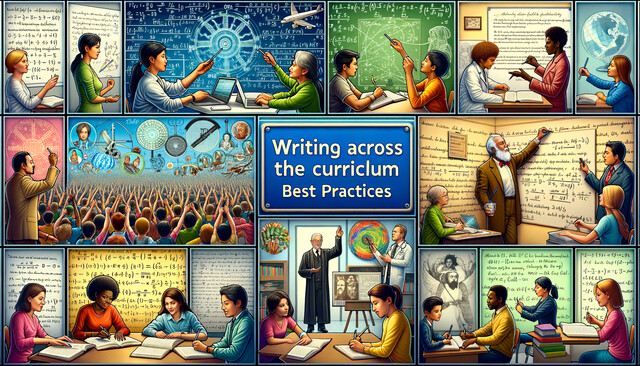 3 hours
0.3 CEUs
Writing Across the Curriculum: Best Practices
+ More Info
3 hours
0.3 CEUs
Writing Across the Curriculum: Best Practices
+ More Info
-
 4 hours
0.4 CEUs
Facilitating Online and Hybrid Learning
+ More Info
4 hours
0.4 CEUs
Facilitating Online and Hybrid Learning
+ More Info
-
 7 hours
0.7 CEUs
Designing Interdisciplinary Curricula
+ More Info
7 hours
0.7 CEUs
Designing Interdisciplinary Curricula
+ More Info
-
 5 hours
0.5 CEUs
Implementing School-Wide Literacy Programs
+ More Info
5 hours
0.5 CEUs
Implementing School-Wide Literacy Programs
+ More Info
-
 6 hours
0.6 CEUs
Fostering a Growth Mindset in Students
+ More Info
6 hours
0.6 CEUs
Fostering a Growth Mindset in Students
+ More Info
-
 3 hours
0.3 CEUs
Holistic Approaches to Education
+ More Info
3 hours
0.3 CEUs
Holistic Approaches to Education
+ More Info
-
 7 hours
0.7 CEUs
Aligning Curriculum with State Standards
+ More Info
7 hours
0.7 CEUs
Aligning Curriculum with State Standards
+ More Info
-
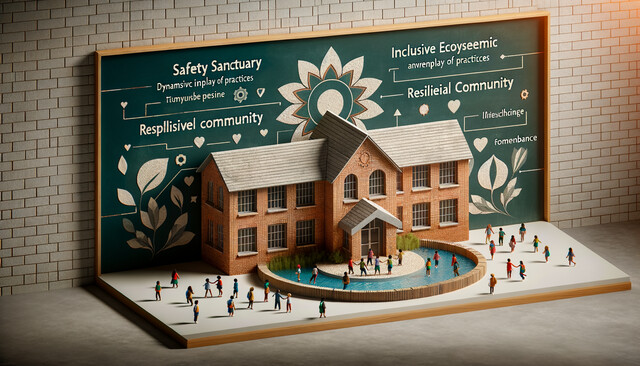 5 hours
0.5 CEUs
Creating a Safe and Supportive Learning Environment
+ More Info
5 hours
0.5 CEUs
Creating a Safe and Supportive Learning Environment
+ More Info
-
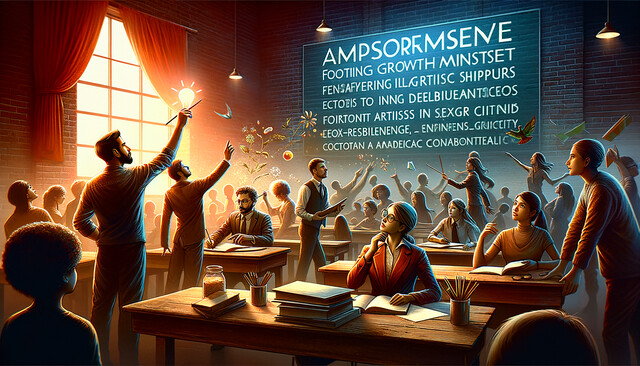 7 hours
0.7 CEUs
Developing Academic Language Skills
+ More Info
7 hours
0.7 CEUs
Developing Academic Language Skills
+ More Info
-
 3 hours
0.3 CEUs
Improving Teacher Retention and Sustainability
+ More Info
3 hours
0.3 CEUs
Improving Teacher Retention and Sustainability
+ More Info
-
 5 hours
0.5 CEUs
Engaging Families in the Educative Process
+ More Info
5 hours
0.5 CEUs
Engaging Families in the Educative Process
+ More Info
-
 6 hours
0.6 CEUs
Creating Learner-Centered Classrooms
+ More Info
6 hours
0.6 CEUs
Creating Learner-Centered Classrooms
+ More Info
-
 5 hours
0.5 CEUs
Advanced Pedagogical Techniques
+ More Info
5 hours
0.5 CEUs
Advanced Pedagogical Techniques
+ More Info
-
 6 hours
0.6 CEUs
Differentiated Instruction Techniques
+ More Info
6 hours
0.6 CEUs
Differentiated Instruction Techniques
+ More Info
-
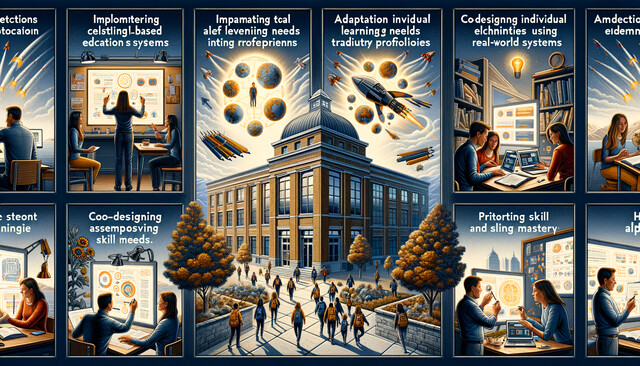 4 hours
0.4 CEUs
Implementing Competency-Based Education Systems
+ More Info
4 hours
0.4 CEUs
Implementing Competency-Based Education Systems
+ More Info
-
 7 hours
0.7 CEUs
Civic Education and Engagement
+ More Info
7 hours
0.7 CEUs
Civic Education and Engagement
+ More Info
-
 4 hours
0.4 CEUs
Innovative Curriculum Design for the 21st Century
+ More Info
4 hours
0.4 CEUs
Innovative Curriculum Design for the 21st Century
+ More Info
-
 5 hours
0.5 CEUs
Implementing RTI Models in Schools
+ More Info
5 hours
0.5 CEUs
Implementing RTI Models in Schools
+ More Info
-
 6 hours
0.6 CEUs
Peer Mediation and Conflict Resolution
+ More Info
6 hours
0.6 CEUs
Peer Mediation and Conflict Resolution
+ More Info
-
 5 hours
0.5 CEUs
Understanding Educational Neuroscience
+ More Info
5 hours
0.5 CEUs
Understanding Educational Neuroscience
+ More Info
-
 4 hours
0.4 CEUs
The Role of Feedback in Student Learning
+ More Info
4 hours
0.4 CEUs
The Role of Feedback in Student Learning
+ More Info
-
 5 hours
0.5 CEUs
Implementing Evidence-Based Practices
+ More Info
5 hours
0.5 CEUs
Implementing Evidence-Based Practices
+ More Info
-
 3 hours
0.3 CEUs
Building Resilience in Students
+ More Info
3 hours
0.3 CEUs
Building Resilience in Students
+ More Info
-
 3 hours
0.3 CEUs
Collaborative Teaching Approaches
+ More Info
3 hours
0.3 CEUs
Collaborative Teaching Approaches
+ More Info
-
 4 hours
0.4 CEUs
Creating a Culture of Collaboration
+ More Info
4 hours
0.4 CEUs
Creating a Culture of Collaboration
+ More Info
-
 6 hours
0.6 CEUs
Supporting Students with Special Needs
+ More Info
6 hours
0.6 CEUs
Supporting Students with Special Needs
+ More Info
-
 5 hours
0.5 CEUs
Maximizing Learning with Flipped Classrooms
+ More Info
5 hours
0.5 CEUs
Maximizing Learning with Flipped Classrooms
+ More Info
-
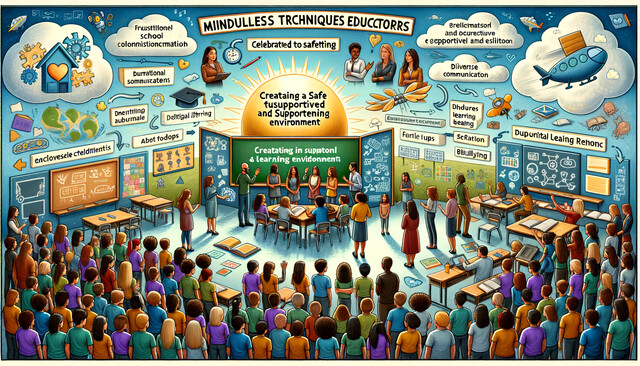 5 hours
0.5 CEUs
Mindfulness Techniques for Educators
+ More Info
5 hours
0.5 CEUs
Mindfulness Techniques for Educators
+ More Info
-
 7 hours
0.7 CEUs
Understanding Learning Styles and Preferences
+ More Info
7 hours
0.7 CEUs
Understanding Learning Styles and Preferences
+ More Info




